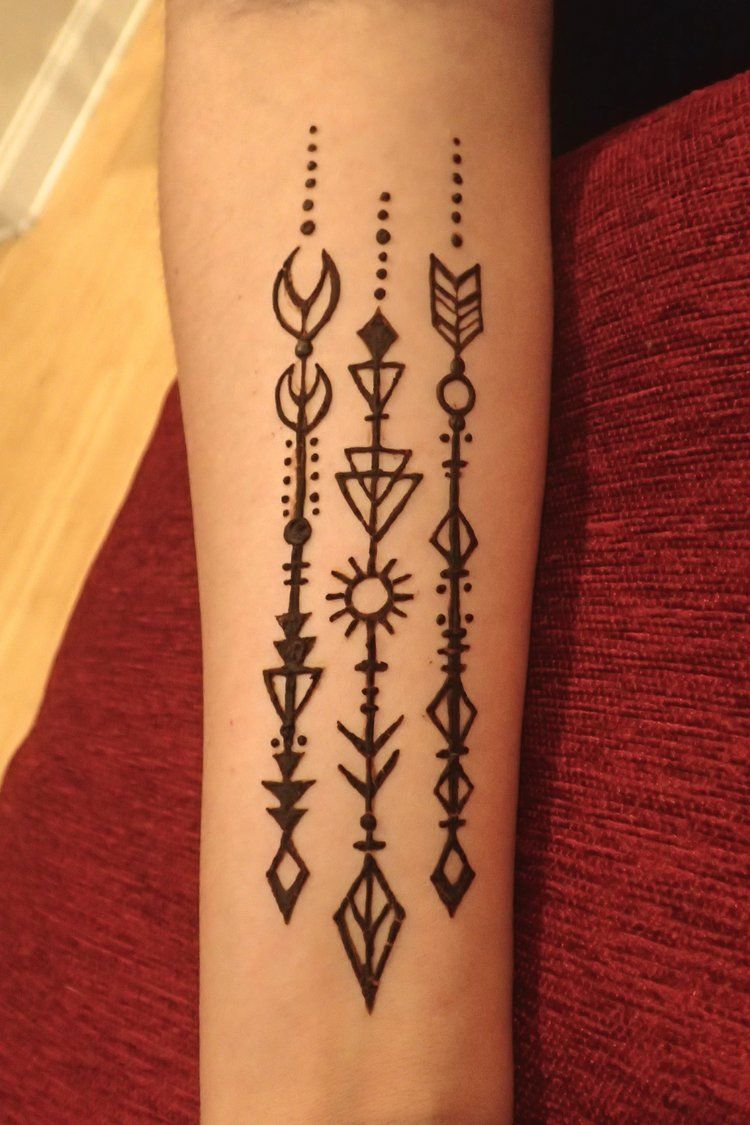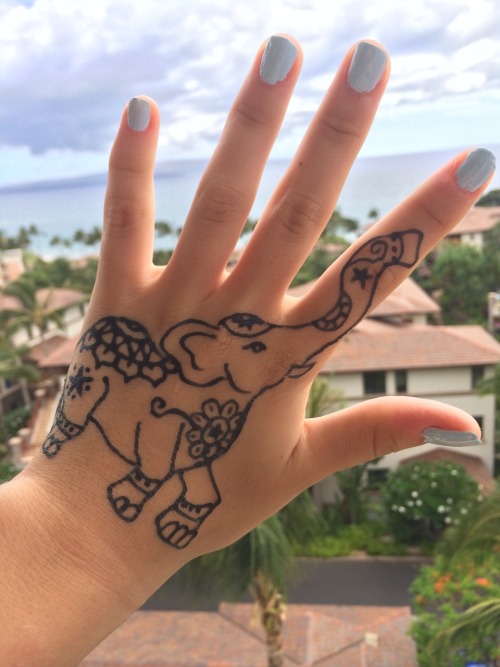Permanent henna tattoo designs, often referred to as "black henna" or "indigo henna," have gained popularity for their ability to provide a semi-permanent alternative to traditional tattoos. This unique form of body art offers a blend of tradition and modernity, attracting those seeking long-lasting, intricate designs without the commitment of a permanent tattoo. However, it's crucial to understand the nuances and potential risks associated with this practice to ensure a safe and satisfying experience.
The Science Behind Permanent Henna

Permanent henna tattoo designs differ significantly from traditional henna, which uses a natural dye derived from the Lawsonia inermis plant. Permanent henna, on the other hand, often contains synthetic dyes or additives to achieve a darker, more long-lasting result. The most common ingredient added is para-phenylenediamine (PPD), a chemical also found in hair dyes and some textiles.
When applied to the skin, PPD can cause a chemical reaction that results in a darker stain. While this provides a more tattoo-like appearance, it also carries potential health risks. PPD is known to be a powerful allergen and can lead to severe skin reactions, especially with repeated exposure. Additionally, the long-term effects of PPD on the skin are not fully understood, and there is a lack of regulation in the henna industry, making it difficult to ensure the safety of these products.
The Artistry of Permanent Henna Designs

Despite the potential risks, permanent henna tattoo designs offer an extensive range of artistic possibilities. Artists skilled in this technique can create intricate, detailed designs that mimic the look of traditional tattoos. Common motifs include tribal patterns, floral designs, and personalized symbols or words. The versatility of permanent henna allows for both small, delicate designs and larger, more complex pieces, catering to a wide range of aesthetic preferences.
Design Inspiration and Cultural Significance
Many permanent henna designs draw inspiration from traditional henna patterns, which have been used for centuries in various cultures for celebrations and rituals. These include Indian Mehndi designs, Moroccan and African patterns, and Arabic calligraphy. By adapting these traditional motifs, artists can create designs that are not only visually stunning but also rich in cultural meaning and symbolism.
| Design Type | Description |
|---|---|
| Tribal | Abstract, geometric patterns inspired by various indigenous cultures. |
| Floral | Delicate floral motifs ranging from realistic flowers to stylized, abstract designs. |
| Calligraphic | Intricate designs featuring beautiful scripts and meaningful words. |

Application and Longevity of Permanent Henna
The application process for permanent henna tattoos is similar to traditional henna, but with some key differences. The henna paste is typically left on the skin for an extended period, often overnight, to achieve a deeper stain. After removal, the design will continue to darken and develop over the next few days.
The longevity of permanent henna designs varies depending on factors such as skin type, design location, and aftercare. On average, these tattoos can last anywhere from a few weeks to several months. Proper aftercare, such as avoiding excessive moisture and sun exposure, can help prolong the life of the design. However, it's important to note that unlike traditional tattoos, permanent henna designs will eventually fade completely.
The Fading Process
As permanent henna tattoos fade, they can take on unique characteristics. The design may appear to “lift” or become patchy, creating a distinct, vintage-like look. Some individuals appreciate this evolution of their design, while others may choose to touch up or remove the tattoo altogether. The fading process can be influenced by various factors, including the original depth of the stain and individual skin characteristics.
Safety and Precautions in Permanent Henna
Given the potential health risks associated with PPD, it’s crucial to approach permanent henna with caution. Always ensure that your artist is knowledgeable about the ingredients they use and can provide transparent information about their products. Avoid henna products that are not specifically marketed for skin use, as these may contain higher concentrations of PPD or other harmful additives.
Before committing to a permanent henna design, consider conducting a patch test to assess your skin's reaction. This simple step can help identify potential allergies or sensitivities before a full application. Additionally, be aware of the signs of a reaction, which may include itching, redness, swelling, or blistering. If any of these symptoms occur, seek medical advice immediately.
Exploring Alternatives to Permanent Henna

For those who wish to avoid the potential risks of permanent henna but still desire a long-lasting, natural-looking design, there are alternative options to consider.
Natural Henna Blends
Some artists offer natural henna blends that incorporate additional, non-toxic ingredients to enhance the color and longevity of the design. These blends may include indigo powder, which provides a darker shade without the use of synthetic dyes. While these designs may not last as long as permanent henna, they offer a safer, more natural alternative.
Semi-Permanent Makeup
Semi-permanent makeup, also known as cosmetic tattooing, is a technique that uses specialized equipment to implant pigment into the skin. This method provides a longer-lasting result than traditional henna but is less invasive than a permanent tattoo. Designs can range from simple eyeliner to complex eyebrow or lip tattoos. While semi-permanent makeup typically requires touch-ups every few years, it offers a more permanent solution than henna without the potential risks of PPD.
The Future of Permanent Henna
As the demand for permanent henna tattoos continues to grow, so too does the need for industry regulation and consumer education. Efforts are being made to standardize the practice and ensure the safety of both artists and clients. This includes advocating for the use of natural, non-toxic ingredients and promoting transparent labeling of henna products.
Looking ahead, advancements in henna art and technology may offer even more options for those seeking long-lasting, natural-looking tattoos. From innovative new ingredients to advanced application techniques, the future of permanent henna holds the promise of safer, more beautiful designs.
Is permanent henna safe for everyone?
+Permanent henna, especially when it contains PPD, can pose health risks for some individuals. It’s important to conduct a patch test and be aware of any potential allergies or sensitivities. Those with a history of skin reactions should exercise caution and seek medical advice before proceeding.
How long does a permanent henna tattoo last?
+The longevity of a permanent henna tattoo can vary widely depending on factors like skin type, design location, and aftercare. On average, these tattoos can last anywhere from a few weeks to several months. Proper aftercare can help prolong the life of the design.
What is the difference between permanent henna and semi-permanent makeup?
+Permanent henna is a natural-based, semi-permanent tattoo achieved through the application of henna paste. Semi-permanent makeup, on the other hand, uses specialized equipment to implant pigment into the skin, providing a longer-lasting result. While both offer a more permanent solution than traditional henna, semi-permanent makeup is generally considered more long-lasting.
Are there any regulations for the henna industry?
+The regulation of the henna industry varies by region. In some areas, there are specific guidelines and certifications for henna artists and products. However, in many places, the industry remains largely unregulated. Efforts are being made to standardize practices and improve consumer safety, but it’s always important to research and choose a reputable artist.